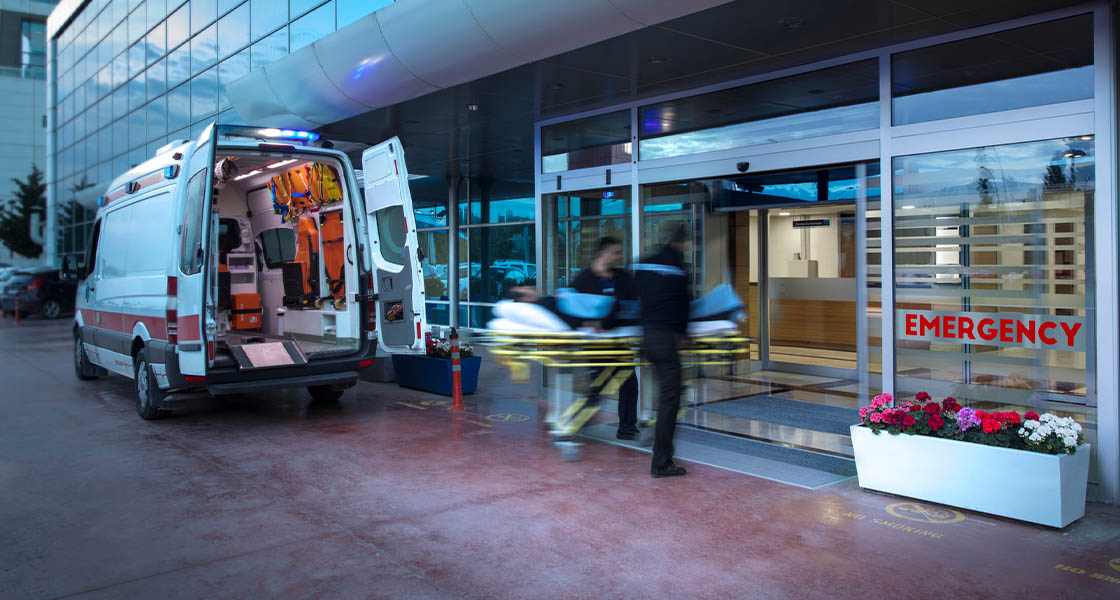© 2025 ALL RIGHTS RESERVED
Georgia Trauma Commission
www.trauma.georgia.gov
The Georgia Trauma Care Network
Commission (GTCNC) was established
in 2007 to address the insufficient
number of trauma centers in Georgia
and the lack of an organized and
coordinated trauma system. The
Georgia trauma system is under
development and will be comprised of
integrated regional systems and plans
and a centralized state-wide Trauma
Communications Center (TCC) as a core
component.
Deploy AirLink mobile routers for the state-wide GPS-based AVLS.
The AirLink Management System (AMM) provides each EMS agency with the ability to analyze information from routers in the field.
Trauma is the leading cause of death in the United States, accounting for over 160,000 fatalities each year and has been the leading cause of death among children for decades. The first 60 minutes after a trauma are known as the “critical hour” for providing care.
The TCC will coordinate trauma system activities by maintaining and providing information on trauma centers’ status and, when appropriate, on pre-hospital capabilities. This information will be used to ensure that patients meeting Trauma System Entry Criteria (TSEC) will have access to definitive trauma care at an appropriate level of state-designated trauma center. A regionalized system approach to organizing emergency care and hospital services will also benefit disaster/ terror preparedness, better manage emergency cardiac, stroke and surgery cases, and emergency patient flow to and from all hospitals within Georgia’s healthcare safety net.
“GTCNC needed to create a new public service that would assure anyone seriously injured anywhere in the state would be transported quickly to a trauma center capable of providing the treatment necessary to save their life and enable their best possible recovery,” said Dennis W. Ashley, M.D., Chair, Georgia Trauma Care Network Commission.
GTCNC contracted the Georgia Tech Research Institute (GTRI), a highly regarded applied research and development organization solving some of the toughest problems facing government and industry across the nation and around the globe, to assist in the development of a state-of-the-art trauma communications system for Georgia.
GTCNC needed to create a new public service that would assure anyone seriously injured anywhere in the state would be transported quickly to a trauma center fully capable of providing the treatment necessary to save their life and enable their best possible recovery.
Dennis W Ashley, M.D.
Chair, Georgia Trauma Care Network Commission
The GTCNC, the Georgia Emergency Management Agency/Homeland Security (GEMA/HS) and GTRI created the Georgia EMS AVLS Program, a state-wide system to provide a display of ambulance positions and to assist the Georgia TCC to advise EMS agencies and hospitals of the closest appropriate designated trauma center to transport or transfer trauma system patients. This system would also be a significant asset to state emergency management in a Mass Casualty Incident (MCI).
One of the goals of the program is to deploy an Automatic Vehicle Location System (AVLS) to a majority of primary 911 Zone Providers across the state, in order to provide the people in Georgia with a powerful trauma communications center and mass casualty incident management asset.
After a competitive procurement process, GTRI selected Sierra Wireless for the state-wide GPS-based AVLS.
In Georgia, vehicle location information is also fed to the GEMA/HS State Operations Center and other command centers for state-wide coordination of EMS resources. Each ambulance has been equipped with a Garmin personal navigation device (PND) and ambulance dispatches can be accepted via the PND. In addition, the PNDs have been customized to enable two-way messaging so that medics can send preliminary information back to dispatch centers.
The AirLink Mobility Manager (AMM) provides each EMS agency with the ability to analyze information from AirLink mobile routers in the field via a single, powerful management platform enabling agency personnel to centrally monitor ambulance locations, and monitors vehicle diagnostics, devices and networks.


During the first phase of this deployment in August 2010, the GTCNC piloted and purchased 200 routers for 27 individual EMS agencies in central Georgia. The routers also had to work with the GEMA/HS Geographic Tool for Visualization & Collaboration (GTVC), a geographic information system used for managing resources during responses to emergencies and homeland security incidents.
In the second and third phases of this contract, GEMA/HS secured federal grant funds to deploy an additional 350 routers to a further 48 Georgia EMS agencies, bringing the state-wide total to 550 vehicles across 75 separate EMS agencies. The solution enables improved resource deployment, vehicle management, dispatch, messaging and operations for each EMS agency and provides GEMA/HS designated command centers with a clearer picture of EMS operations for emergency response.
In the future, the telecommunications platform provided under the AVLS program offers the potential to extend the capabilities of the hospital’s emergency care center to the injury scene to improve triage, stabilization and transfer/transport of all emergency care patients. Emergency cardiac and stroke cases can be more efficiently addressed with early analysis of ECGs, video and patient care records by cardiologists and catheterization labs. The fourth phase of the program added 200 routers across another 10-12 individual EMS agencies.
For individual EMS agencies, having a future-proof communications platform enables them to simply and cost-effectively deploy new applications that support their mission, and offers them opportunities to add additional features and functionality such as:
IMPROVED RESPONSES:
LOWER COSTS:
IMPROVE OPERATIONS:

Georgia Trauma Commission
NAM
First Responders
Public Safety
AirLink Routers MG90
Networking Solutions:
ACM
oMG
AMM
© 2025 ALL RIGHTS RESERVED